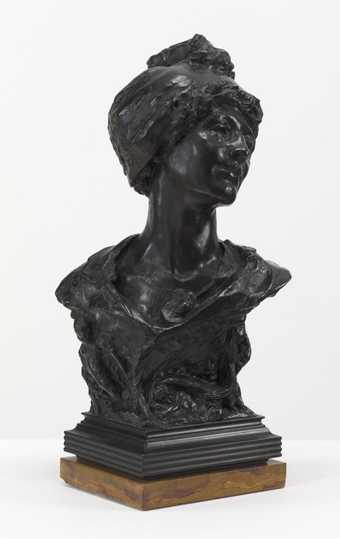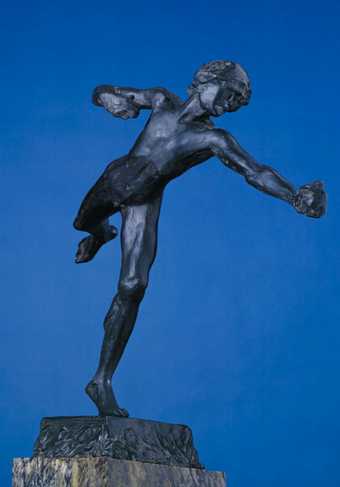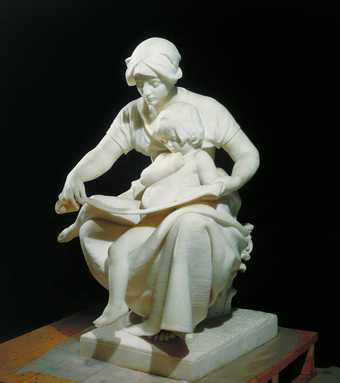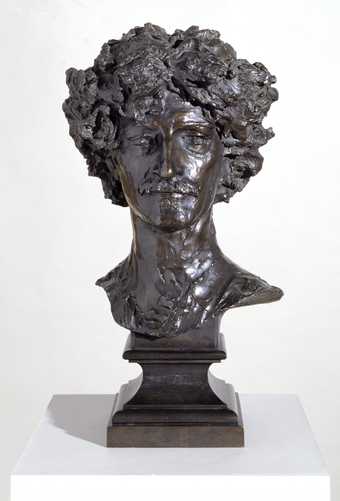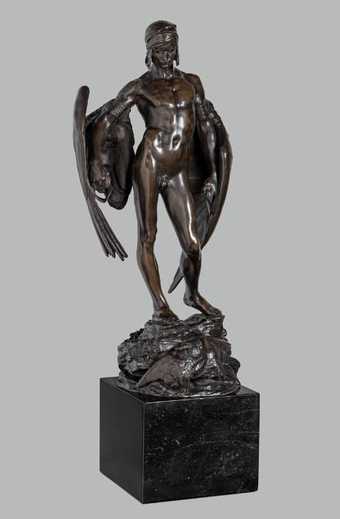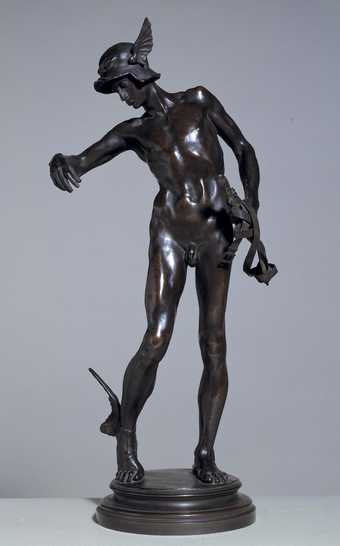Biography
Sir Alfred Gilbert (12 August 1854 – 4 November 1934) was an English sculptor. He was born in London and studied sculpture under Joseph Boehm, Matthew Noble, Édouard Lantéri and Pierre-Jules Cavelier. His first work of importance was The Kiss of Victory, followed by the trilogy of Perseus Arming, Icarus and Comedy and Tragedy. His most creative years were from the late 1880s to the mid-1890s, when he produced several celebrated works such as a memorial for the Golden Jubilee of Queen Victoria and the Shaftesbury Memorial Fountain Eros on Piccadilly Circus.
As well as sculpture, Gilbert explored other techniques such as goldsmithing and damascening. He painted watercolours and drew book illustrations. He was made a member of the Royal Academy of Arts in 1892, yet his personal life was beginning to unravel as he took on too many commissions and entered into debt, whilst at the same time his wife's mental health deteriorated. Gilbert received a royal commission for the tomb of Prince Albert Victor in 1892, but was unable to finish it and the number of complaints from other dissatisfied clients grew. By the mid-1900s, Gilbert had been forced to declare himself bankrupt and to resign from the Royal Academy. He moved to Bruges in disgrace and separated from his wife. He later remarried, entering a period when he created few artworks.
In the 1920s, his career was rehabilitated with the help of journalist Isabel McAllister. He returned to England and finally completed the tomb of Prince Albert Victor, as well as taking on new commissions such as the Queen Alexandra Memorial. In 1932, Gilbert was reinstated as a member of the Royal Academy and was also knighted. He died in 1934, at the age of 80. Gilbert was a central inspiration for the New Sculpture movement and in the 21st-century is regarded as one of the foremost sculptors of the Victorian age.
This biography is from Wikipedia under an Attribution-ShareAlike Creative Commons License. Spotted a problem? Let us know.
Read full Wikipedia entry


